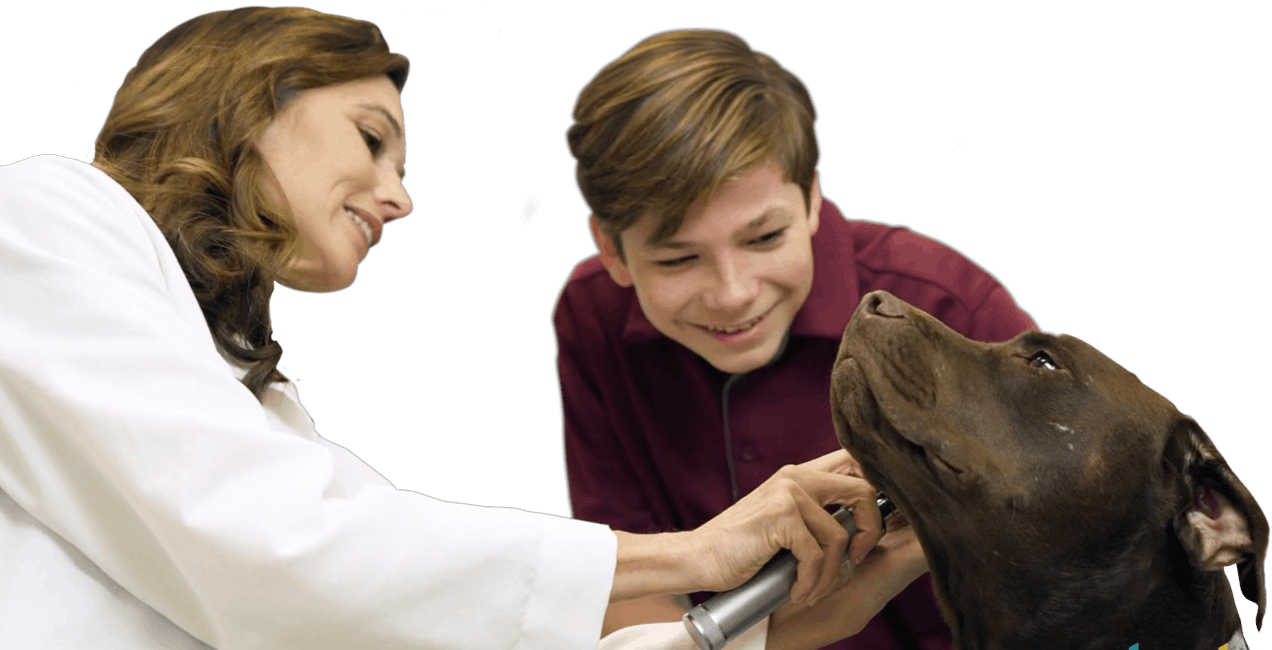WHAT YOU’LL SEE IN THIS VIDEO
In this video you’ll watch Dr. Gary Cook, a veterinarian at All West Veterinary Hospital in Bozeman, Montana work to understand why his equine patient is lame. Like all of our science of veterinary medicine videos, you’ll see and hear things as they happened in the veterinary hospital. You’ll hear the sounds from the barn and the conversations between Dr. Cook and the horse’s owners.
A nine-year-old paint mare named “Luv” has been lame for about 6-8 weeks. If they ride her, she gets a little bit better and her lameness goes away. Unfortunately, she becomes sore again after she cools down. At the hospital, Dr. Cook and his staff looked at Luv’s gate. Dr. Cook observes a grade 2 lameness (this means she appears lame when trotting but not when walking) in the left foreleg.
To help him locate the cause of the lameness, Dr. Cook applies an anesthetic agent in the pastern (the part of Luv’s leg between her fetlock and hoof). This procedure is called a nerve block. Dr. Cook is blocking the two palmer digital nerves that lead to the foot. If the lameness goes away, then Dr. Cook knows that his patient’s pain is coming from the foot area.
The lameness goes away after the block. Now that he knows where the problems is, Dr. Cook recommends taking radiographs (x-rays) of the foot hoping that he will be able to see the cause.
The radiographs show that the problem is in the navicular bone. (Learn more about this bone below). Dr. Cook shows the owners the images and recommends medicine to relieve the pain and that Luv be fitted with a different
THE SCIENCE OF VETERINARY MEDICINE
What does Dr. Cook see when he looks at the radiograph images on the computer? Look at the image below.

The radiograph that Dr. Cook viewed is on the left. On the right is an illustration that will help you understand what you are seeing in the x-ray image. The radiograph is an image of Luv’s front left hoof and lower leg. You are viewing it from the side.
If you look at the illustration on the right, you can see the outline of the lower portion of Luv’s leg. You can also make out something at the bottom of the hoof. That is the horseshoe and nails. You can also see 4 objects that are labeled A, B, C and D. These are the bones of the foot.
A – Long Pastern Bone
B – Short Pastern Bone
C – Coffin Bone
D – Navicular Bone
Now look at the radiograph image on the right and try to make out these same structures. The bones appear whiter or more “radiopaque” than the rest of the foot image.
By viewing this x-ray, Dr. Cook notices that the navicular bone does not look normal and he determines that it is the source of the pain.
FAST FACTS
- Pain from the navicular bone is most commonly seen in 4-15 year old horses
- Quarter horses and Thoroughbreds are affected with navicular disease more than other breeds of horses
- Arabian horses are rarely affected by navicular disease
- The front feet are most commonly affected
- The name veterinarians use for this condition is “navicular syndrome”














Comments Add Comment
Want to add a comment?
In order to comment you need to login or join Vet Set Go